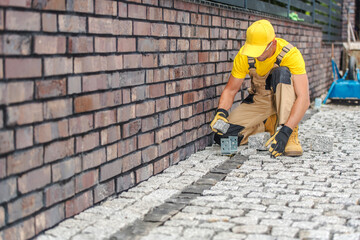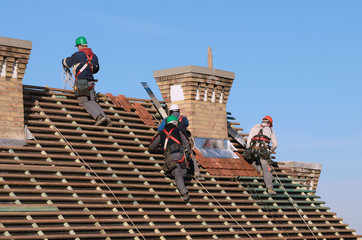Flooring Middletown NY is a major investment, so it’s important to consider your options before choosing. From wood to vinyl, many types of flooring can fit your style and budget.
Hardwood floors add beauty to any room. Wider planks and intricate patterns like herringbone and chevron add interest. Rustic finishes like hand-scraped and wire-brushed create texture, adding warmth and character.

When shopping for flooring, it’s important to consider the long-term cost. Many homeowners focus on aesthetics and price, but they may not consider how the material will perform over time. Durability is a critical factor, especially for areas that are subject to water and humidity. It is also important to review a floor’s impact resistance, stain-resistance, and maintenance methods. For example, vinyl floors are a good choice for kitchens and bathrooms, but they can warp over time if exposed to moisture.
Flooring is a significant investment, and the price varies widely depending on material. The installation cost is usually based on the square footage of a space, and there are additional costs that can affect the final bill. For example, a homeowner may need to remove existing flooring or repair the subfloor before installing the new flooring. In addition, some homes require asbestos abatement or removal, which can add up quickly.
Carpeting has a wide price range, and the materials themselves are not cheap. In addition, installation is expensive, as it requires a professional. The best way to reduce the cost of your flooring is to compare prices at multiple home improvement stores. Many home improvement specialists offer free estimates and can help you find the best deal.
Hardwood flooring has become more expensive than in the past due to supply issues and rising demand, but it’s still an excellent option for a modern or traditional home. It’s also a great alternative to linoleum and vinyl, as it has a natural look and feels soft underfoot.
Vinyl is a popular choice because it’s durable, water-resistant, and affordable. It can also be made to look like wood or stone. It’s not easy to tell the difference between a vinyl floor and the real thing, which is one reason why it’s so popular. However, it’s important to note that vinyl is not environmentally friendly and can emit odors.
Laminate is a cheaper alternative to hardwood, but it’s not as beautiful or durable. It has a plastic feel and the repetition of patterns can give it away. It also contains formaldehyde, which is not healthy for the environment or for people with asthma. Fortunately, there are now options that look just as nice as real wood but don’t contain harmful chemicals.
Durability is a vital consideration when choosing flooring. Floors must withstand the weight of furniture, daily foot traffic and spilled food and drinks. Ideally, they also resist damage caused by pets, children and rambunctious household members. Durability can be determined by the type of materials used and the quality of construction.
Hardwood floors are a classic and durable option. They can withstand heavy furniture and are a great choice for homes with children. However, even the most rugged hardwoods on the Janka scale can scratch and dent if they are not properly cared for. The species of wood is important to consider, as well as the coating. For instance, Palmetto Road hardwoods feature eight coats of finish that help protect the planks from scratches and dents.
Laminate flooring is another durable choice. It is composed of a base layer and core that is reinforced with high-density fiberboard. The top of the laminate is then printed with a photo layer that imitates the appearance of wood, tile or stone. This image is then protected by a transparent plasticate that helps to guard against staining, fading and wear.
Vinyl tile is also an excellent durable option. It is available in a variety of colors, patterns and textures. It is easy to clean, and it comes with a protective wear layer that can protect against scratches and stains. This type of flooring is also affordable and long-lasting.
Other durable options include natural stone and concrete floors, which are popular in many commercial buildings. They are especially good for kitchens and other high-moisture areas. These types of floors require frequent cleaning and maintenance, but they can withstand the rigors of high-traffic areas.
Other durable options include marble, travertine and polished concrete. These types of floors are also gaining popularity in residential spaces and are a popular choice for restaurants and other high-traffic areas. Durability is particularly important in industrial spaces, such as warehouses and slaughterhouses. In these spaces, flooring must withstand the weight of equipment and forklifts. It must also be able to withstand exposure to harsh chemicals and high temperatures.
Flooring requires regular cleaning to minimize the buildup of grit and debris. This is especially true in high-use areas such as entrances, lobbies, and hallways. Depending on the material, some flooring types require more frequent attention than others. For example, concrete floors typically need to be scrubbed on a regular basis. In some cases, a floor may need to be resealed and refinished.
Most of the flooring materials we sell are very easy to maintain with minimal effort. Vinyl, laminate and engineered wood are very durable and low maintenance while stone and linoleum can be a little more difficult to care for.
Hardwoods should be swept and vacuumed regularly (using the hard floor attachment without the beater bar). Wipe up spills promptly and use protective mats at entryways to prevent dirt, sand, grit, and gravel from scratching. Stiletto or spike heel shoes should be avoided because they can dent and damage hardwoods.
Laminate floors should be swept and dust mopped daily to reduce the accumulation of abrasive grit. Swep up spills as soon as they occur, and wipe away smears with a damp cloth. Never allow water to stand on laminate, as this can cause swelling and warping. Occasionally clean the surface of laminate with a product made specifically for laminate floors.
Refinishing of wood floors is required on an as-needed basis. This is necessary when the finish has worn down to the bare wood, there is staining or embedded dirt that cannot be removed by normal cleaning and buffing. Refinishing should be done by a professional flooring contractor using odorless mineral spirits and a wood stripping pad.
Often, minor scratches or burns are the result of furniture that has been improperly moved or rearranged. In these cases, a touch-up kit designed for the specific type of wood is available to repair the damaged area. If the burn or scratch is too severe, it may be necessary to refinish the entire board.
When deciding on what flooring to choose for your home, style is an important consideration. There are many different types of styles, and the best choice will depend on the architectural style of your home as well as the other materials in your home. For example, if your home has wood accents, you may want to choose hardwood floors with warm-toned colors. You should also consider the other flooring materials in your home, including carpet and tile, to make sure your new floor blends with them. If you want to use two different flooring types that abut each other, it is often best to use a transition strip to cover the edge where the materials meet.
There are many different types of styles for your flooring, from modern to mid-century modern to country cottage and more. Each one has a particular look that combines with specific colors and other materials in the room. The best choice for your style will depend on the purpose of the room and the amount of foot traffic it receives. For instance, a bathroom or kitchen will require floors that can handle moisture and heat, while living rooms and foyers will need to withstand high levels of foot traffic.
Hardwood floors work well with any style, especially if they have visible graining. They are also suitable for industrial style, which is popular in converted loft spaces. Carpet is an option for a more traditional style, as are vinyl planks and laminates. In addition, terrazzo tile is an excellent choice for mid-century modern, which is popular in many urban areas.
In addition to choosing a style that works with your space, it is important to choose a flooring material that will last for a long time. Some materials, like natural stone, will even become more beautiful over time. For example, a travertine slab that is exposed to the sun will develop a patina, which adds character and charm to the floor.
The durability and cost of your flooring will be influenced by the type of environment in which it is installed. For example, some flooring can only be used in a low humidity environment, while others are suited for use with underfloor heating. You should also consider the level of foot traffic that will be occurring on the floor, as this will impact its lifespan.










